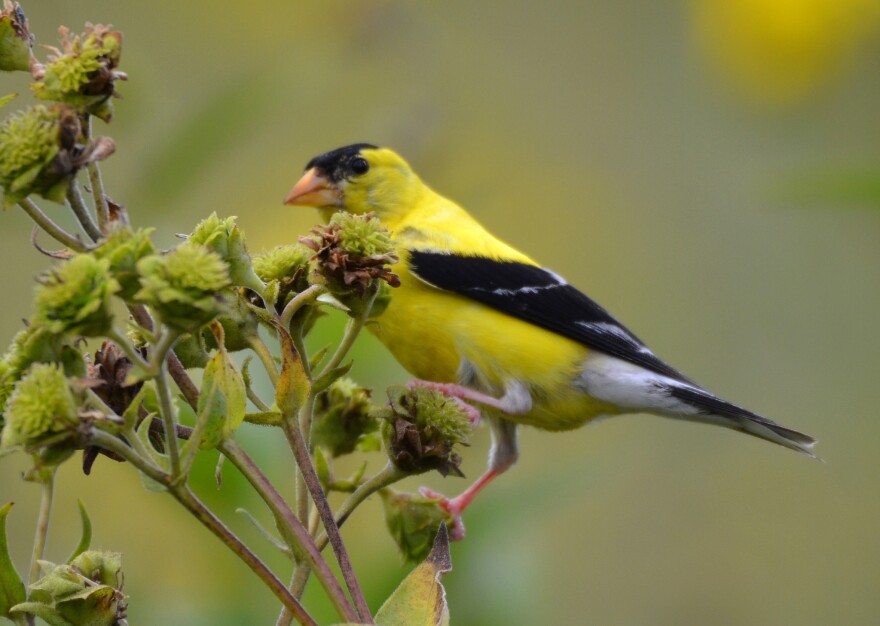The bird world quiets down by late summer - but not the American goldfinch, one of the most common backyard birds. September brings the chatter of young goldfinches as they follow their male parent. They beg noisily, perched with head thrown back and trembling wings.
Most songbirds switch their diet to high-protein insects when feeding their young, and they nest earlier when insects are most bountiful. For example, chickadees that keep bird-feeders busy in winter disappear in summer as they forage for insects not birdseed.
Goldfinches never make the switch. They're year-round seed and grain eaters, and delay nesting to ensure seed availability. In fact, the appearance of seed-rich composite flowers very likely stimulates nesting, along with the shifting day length of late summer.
Goldfinches appear to be especially linked with thistles. They often line their nests with soft thistle down, and feed on thistle seeds. As for young goldfinches noisily following their male parent, the female does the nest-building, egg-brooding and tends the nestling for a week or so, but then she's done. The male takes over. Some females that nest early enough find another mate and produce another brood.
All too soon, goldfinches, too, will quiet down, in sound and in looks. Feather molt follows breeding, and the male's bright yellow summer plumage soon will be replaced by feathers that match the muted palette of winter.








